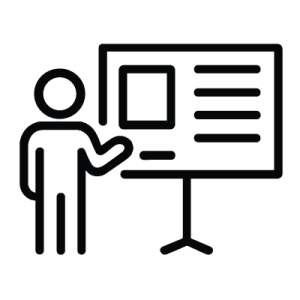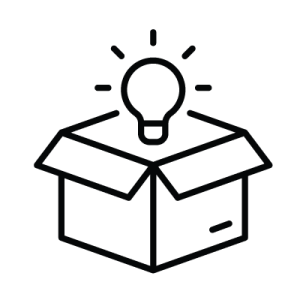Investigator:
Richard Watkins, Livindi
MassAITC Cohort: Year 2 (AD/ADRD)

Project Accomplishments: The Livindi pilot project aimed to develop and test a technology platform that detects distress-related events—especially falls—using audio recognition, motion sensors, and machine learning. Participants received pre-configured kits with tablets and sensors, and the system was designed to operate entirely on-device to ensure privacy. The AI model was refined to reduce false positives, particularly from background noise like TV or music, by requiring the distress phrase “Help Me” to be repeated within a short time frame. The platform integrated real-time caregiver alerts and a user-friendly interface tailored for older adults. The study also included pre- and post-interviews using the Falls Efficacy Scale to assess changes in participants’ confidence in performing daily activities.
Results showed that the system not only effectively detected falls but also improved participants’ confidence in daily tasks, with over half reporting increased confidence in areas like dressing, cleaning, and navigating stairs. The technology has since been commercialized and adopted by over 500 users, received additional funding, and was recognized by the National Council on Aging as a leading monitoring solution. Notably, it even enabled a life-saving intervention during the study. Overall, the pilot demonstrated the potential of Livindi’s integrated, privacy-focused system to enhance safety and independence for older adults.
Initial Proposal Abstract: The aims of this study are first to optimize hardware and enhance software for in-home detection of distress related events for use by older adults and caregivers. The second aim is to develop a database of patients with a predisposition of falling and compromised cognitive status. The third aim is to develop Al models from data to predict fall probability and actual fall.
The proposed research will detect distress related events (DREs) based on a patient’s voice fused with activity data. The research will utilize a platform that supports patients in their homes and detect a distress call explicitly uttered by a patient or automatically based on recognizing a DRE. Datasets resulting from the monitoring of occupant behaviors will be utilized in the detection of possible DREs in indoor environments to refine the understanding of a DRE using a cloud-based platform. Data will be acquired using microphones available in smartphones and tablets where participants are less aware of being monitored and support the acquisition of a large-scale dataset. The dataset will be used to develop a deep learning-based sound recognition model to monitor occupant behaviors and detect possible DREs. The platform will define the optimal complexity of a network architecture to accommodate a short learning time while maintaining an acceptable accuracy.
Activity data will be captured from a population of patients using a data collection device measuring motion, steps, bathroom door movement, refrigerator door movement, egress door movement, and steps. In addition, sensors will capture sleep start time, sleep end time, time when bed was entered and time when bed was exited. Patients will be provided a tablet equipped with a microphone and data collection software. Using machine learning models, we will attempt to prove that fusing sounds and activity data will increase understanding whether there has been a fall.
Outcomes:
- Award: Recognition as most comprehensive monitoring system for older adults from National Council on Aging (2025)
 Experts from the National Council on Aging (NCOA) have selected the Top 5 Home Monitoring Systems for older adults for the year 2025 and Livindi has been named the most comprehensive solution currently on the market. The pros of their solution were noted as the affordability, the variety of sensors… Read more: Award: Recognition as most comprehensive monitoring system for older adults from National Council on Aging (2025)
Experts from the National Council on Aging (NCOA) have selected the Top 5 Home Monitoring Systems for older adults for the year 2025 and Livindi has been named the most comprehensive solution currently on the market. The pros of their solution were noted as the affordability, the variety of sensors… Read more: Award: Recognition as most comprehensive monitoring system for older adults from National Council on Aging (2025) - Award: Fortune Recommends names Livindi the most comprehensive older adult monitoring system
 Firsthand product testing testing and expert review have resulted in Fortune magazine recommending Livindi as the most comprehensive home monitoring system and recognition as one of the 6 best older adult monitoring systems. What they said: “Regarding elderly monitoring systems, none seem as detailed and comprehensive as Livindi. This system… Read more: Award: Fortune Recommends names Livindi the most comprehensive older adult monitoring system
Firsthand product testing testing and expert review have resulted in Fortune magazine recommending Livindi as the most comprehensive home monitoring system and recognition as one of the 6 best older adult monitoring systems. What they said: “Regarding elderly monitoring systems, none seem as detailed and comprehensive as Livindi. This system… Read more: Award: Fortune Recommends names Livindi the most comprehensive older adult monitoring system - Poster Presentation: a2 National Symposium 2024
 Title: Detection of Falls and Other Health Events Using Sound, Activity monitoring and Machine Learning Authors: Richard Watkins, Sebastian Jastrzębski, David Watkins
Title: Detection of Falls and Other Health Events Using Sound, Activity monitoring and Machine Learning Authors: Richard Watkins, Sebastian Jastrzębski, David Watkins - New Product Launch: New Version of Resident App now available
 Livindi has released new versions of their Resident App, the phone Apps, as well as the firmware which incorporated the technology.
Livindi has released new versions of their Resident App, the phone Apps, as well as the firmware which incorporated the technology.
